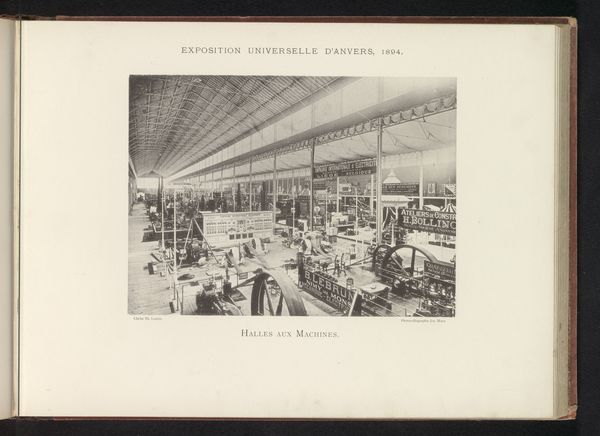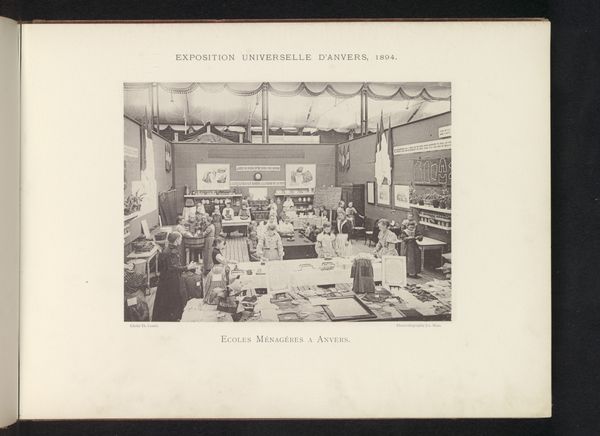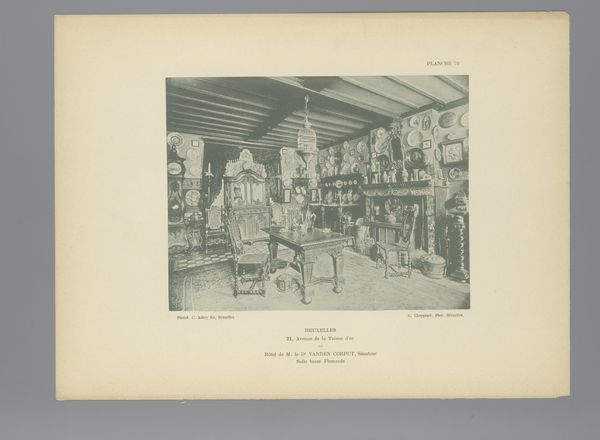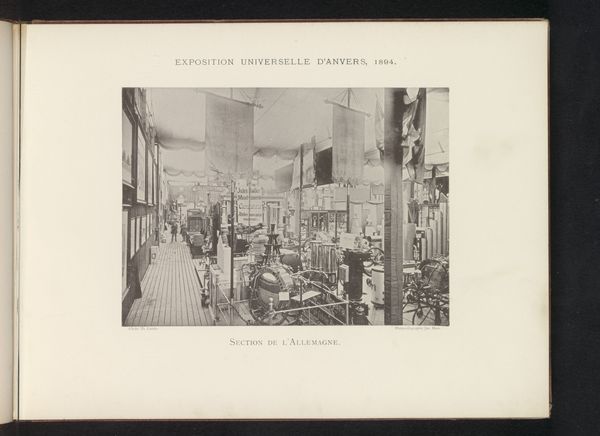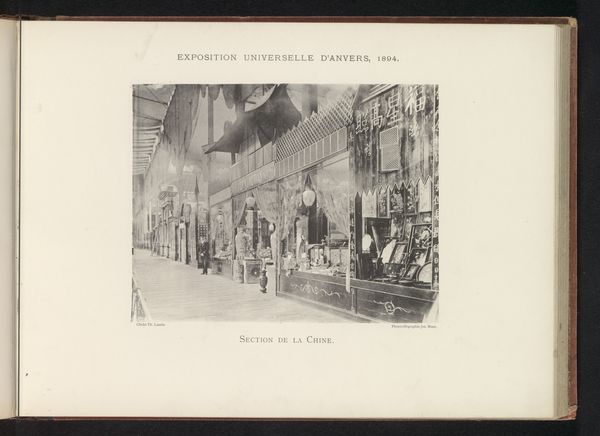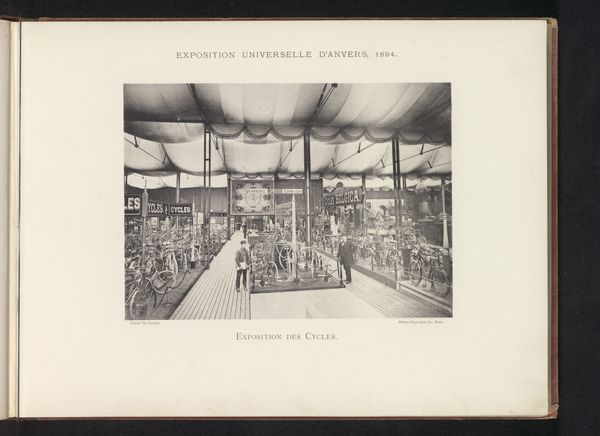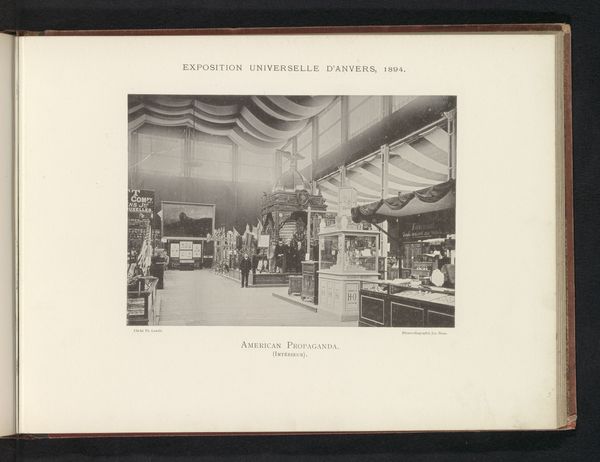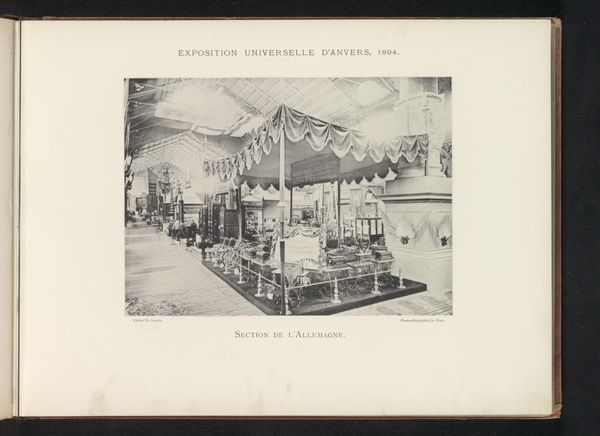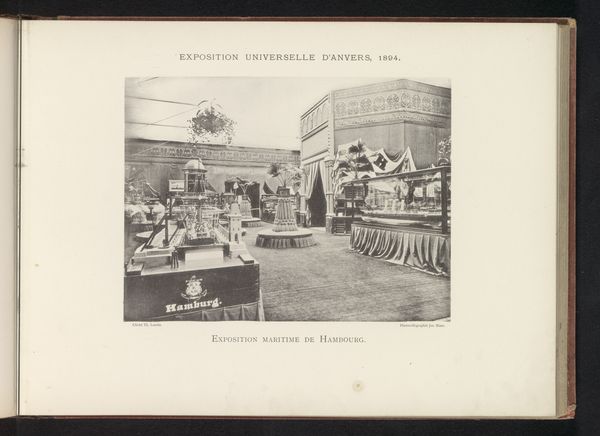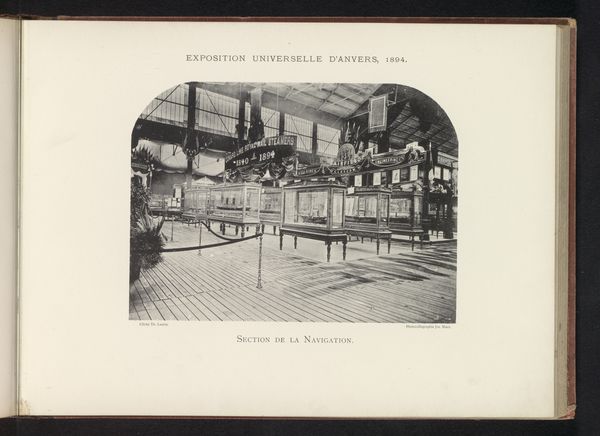
print, photography
# print
#
landscape
#
photography
#
realism
Dimensions: height 160 mm, width 218 mm
Copyright: Rijks Museum: Open Domain
Curator: Let’s look now at this photographic print by Th. Lantin titled "Exposition of Dutch objects at the world exhibition in Antwerp" dating back to 1894. What strikes you about it? Editor: The sheer volume of objects. The light filtering through the translucent tenting really casts everything in an optimistic, industrious glow. Curator: Precisely! The photograph meticulously catalogs the breadth of Dutch manufacturing on display at this world fair. Observe the structure – the way light is managed to emphasize these consumer items, from architectural fragments to lighting fixtures, and what it tells us about the ambitions of Dutch industry. Editor: Well, the visual language used feels significant. Look at the lanterns - throughout history they’ve represented enlightenment and guidance, especially within the Dutch Golden Age of painting. Here, they seem to suggest progress and innovation, not merely physical illumination. Curator: I’d agree, we can observe not just what's there, but the context of display. The calculated arrangement would highlight specific commodities over others, and thus tell us about consumer appetites, but also what the Netherlands *wants* the world to think of it. Editor: I noticed that. How Dutch industries wanted to project themes such as, for example, the use of tradition mixed with future ideals to project national values onto an international stage. The cultural message embedded in all of these items. Curator: We should acknowledge that these "world exhibitions" played an outsized role in driving consumerism. So beyond this, can you reflect on how those goals and desires relate to contemporary cultural displays today? Editor: Definitely! Even today, world expos work the same way to show off industrial prowess and ideals. This picture makes me think about today’s material desires but rooted within 19th-century idealism. Curator: I'd add, looking at this photograph now it makes me wonder how consumption of the past still determines so many consumer choices of the present. Editor: A wonderful reminder that what appears cutting-edge often has its roots deeply buried in earlier layers of aspiration. Thank you.
Comments
No comments
Be the first to comment and join the conversation on the ultimate creative platform.
